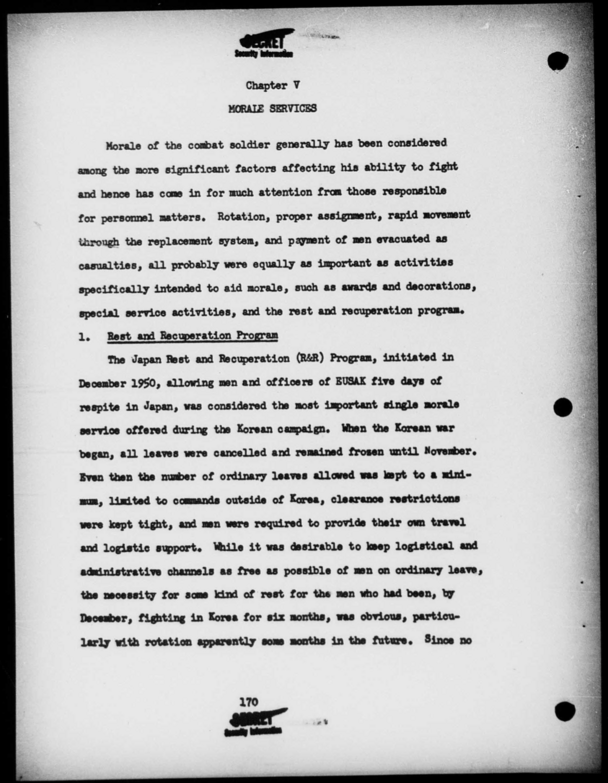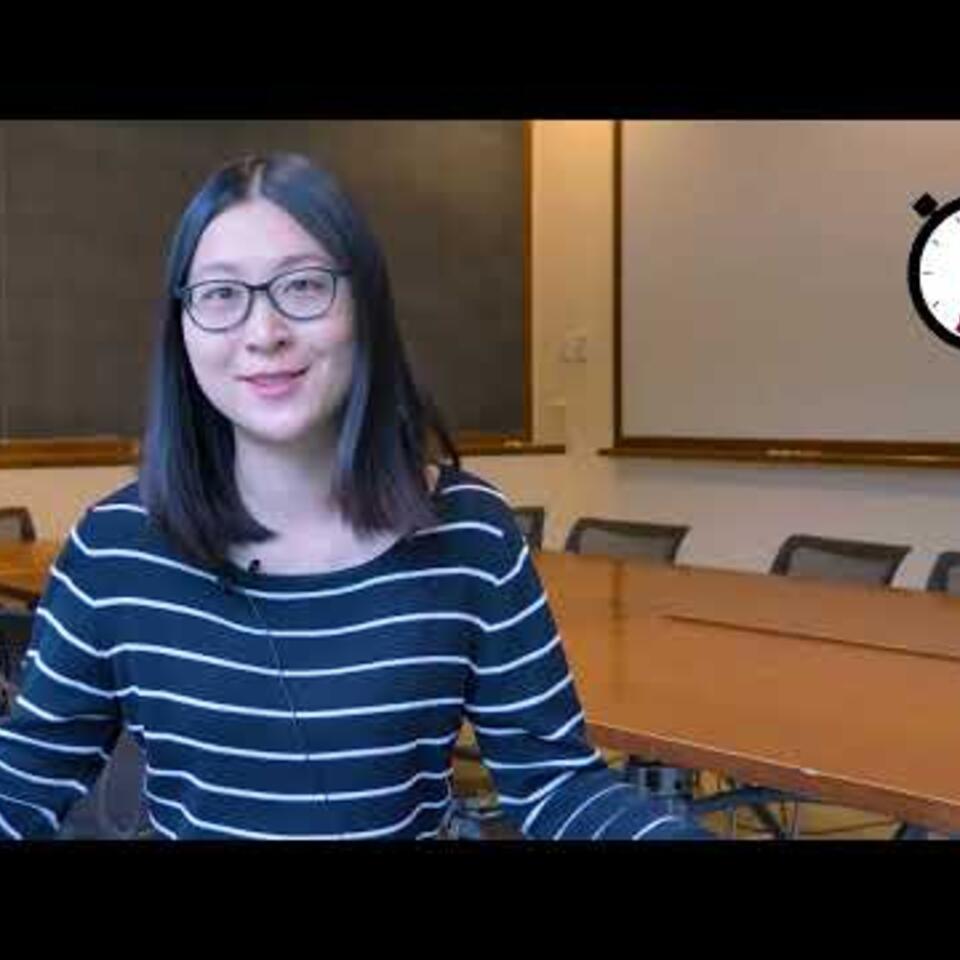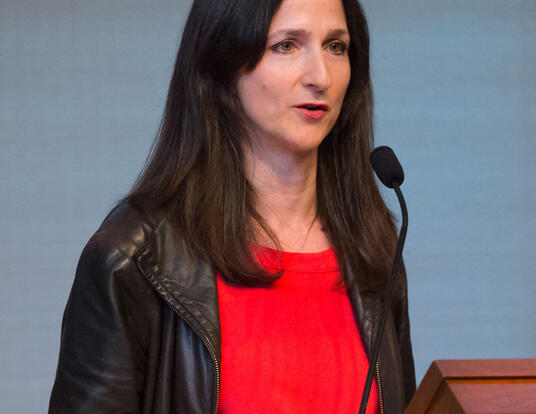Cold Comfort
Sexualized labor in Asia during and after WWII

Research at Risk: Since World War II, universities have worked with the federal government to create an innovation ecosystem that has yielded life-changing progress. Now much of that work may be halted as funding is withdrawn. Find out more about the threats to medical, engineering, and scientific research, as well as how Harvard is fighting to preserve this work—and the University's core values.
Panic set in when Sara Kang heard in March 2021 that a gunman had murdered eight people—six of them women of Asian descent—at three different spas in her hometown of Atlanta, Georgia. Her mother’s nail salon was only a few miles away from one of those attacked by the shooter.
“Police investigations revealed the murderer was driven by an urge to suppress his sexual temptations towards Asian women, which was why he had targeted salons,” Kang remembers. “Suddenly, the links between my research and this man’s admission about Asian spas became personal. I became determined to understand how ideas about Asian women, sexual temptation, and spa and care work became forged historically.”
Kang spent much of her childhood in the backrooms of nail salons observing how her mother and the other employees assumed a deferential, polite demeanor toward their predominantly white clients. Today, as a Korean American PhD student in history at the Harvard Kenneth C. Griffin Graduate School of Arts and Sciences (Harvard Griffin GSAS), she asks why many Asian women are involved in care work and sexualized labor. For answers, she explores the history of US armed forces in Asia after World War II with an eye toward better understanding the way that militarization shapes the lives of Asian women in America today.
“Operation Relax”
During her undergraduate years at Williams College, Kang studied Japanese history and wrote a senior thesis about the Battle of Okinawa—the only fighting on Japanese soil during World War II. Thanks to a Fulbright scholarship, she spent the next two years after college living in rural Japan and developing the language skills that would serve her as a future PhD candidate at Harvard. During this time, she also discovered her particular passion for understanding the experiences of women during times of war.
“I was frustrated by military historians’ emphasis on troops, generals, tacticians, etc.,” she says. “Our understanding of the military ought to be much more nuanced. So I came to Harvard Griffin GSAS to study the impact of war on vulnerable communities whose labor played an important support role.”
Kang’s dissertation addresses the ways that sex and gender become militarized by exploring the history of the Japanese and US armed forces. She starts with World War II, explaining how care work in Japan was a form of gendered war effort. Japanese women could be ideal citizens by supporting the military through mothering and childbearing. Their labor could also extend beyond the home to the public sphere, where women were coerced into serving as “comfort women.”
Kang argues that the “comfort women” system emerged at the intersection between societal expectations around care work and militarized sex. Cloaked in euphemism, this regime of state-sanctioned prostitution forcibly recruited women of all backgrounds from Japan and its colonies to provide sex for the military.
Kang suspected that the system evolved into “Operation Relax,” better known as Rest & Relaxation, or R&R, the US military program initiated in 1950 for troops fighting in Korea. She conducted research at the US National Archives in Washington, DC, but found no official records condoning sexual activities for troops. “Everything I read was just like, ‘Oh, men need a break from war. They’re going to play soccer . . . ballroom dancing . . . basketball tournaments,’” she says.
Kang traveled to Japan but, as in the US, official records in Tokyo and Japanese cities where American R&R centers were established said almost nothing about sex. A different picture began to emerge, however, as Kang pieced together accounts from local newspapers in regions that hosted R&R Centers.
“I got a totally different sense of what R&R looked like from [the local Japanese] perspective,” Kang says. “R&R was translated in these accounts as ‘comfort labor,’ the term used to describe the work of comfort women.”

In her dissertation, Kang cites a 1953 municipal report from the Japanese city of Nara that discusses a new program begun by prefectural authorities to “comfort” US troops. The program registered over three hundred women.
“The Prefectural Preventative Affairs Division recently organized a service association for stationed troops’ relationship with cabarets and other facilities in Nara City and registered about three hundred service women (sekkyakufu) belonging to the association, and printed ID cards and badges,” the report reads. “This authorizes an official panpan [Japanese term for sex workers] system whereby no one except those in possession of these items can be in contact with stationed soldiers.”
Kang writes that “Detailed inspection reports of each woman’s [medical] examination were forwarded to the office at Camp Nara, where US military authorities examined and approved with stamps that read ‘Pass,’ ‘Hospital,’ ‘Sick,’ ‘Home,’ and ‘Quit.’”
Other articles discussed how brothels, taxi associations, and local hot spring owners were catering to the soldiers, helping them access clean sex. There was even reporting about how some women who intended to “fraternize” with US servicemen registered to be tested weekly at a local health center to prove they were free of venereal disease.
By saying they were controlling venereal disease, what they actually meant was they were controlling women’s bodies . . . to use women as a means of providing comfort for soldiers.
–Sara Kang
Drawing on this research, Kang collaborated with Richard B. Wolf Associate Professor of Women, Gender, and Sexuality Durba Mitra and Associate Professor of American Studies at Wellesley College Genevieve Clutario on an article for Harper’s Bazaar asserting that the US military had engineered a system of sexual coercion.
“On December 31, 1950," Kang and Mitra wrote, "the Eighth Army, working with the Japan Logistical Command, formally introduced the military program known as R&R, formally understood as rest and recuperation. Modeled on the Japanese ianjo, a term initially used to describe hot springs and spas, and later translated as ‘comfort stations,’ this was a system of U.S. military sexual exploitation built across vast geographies in Asia and the South Pacific.”
To provide cover for the program, Kang says the US military co-opted the language of public health to condone what were effectively red-light districts.
“By saying they were controlling venereal disease,” Kang says, “what they actually meant was they were controlling women’s bodies, the examination of bodies, the injection of penicillin, and development of medicine to use women as a means of providing comfort for soldiers.”
A Deeply Personal Project
Kang plans to conclude her dissertation by showing how the war in Vietnam—when three million US troops went on R&R—took the military’s model global. “Japan colonized many countries and regions during World War II in the Asia Pacific,” she says. “It’s no coincidence that the places where the US military ends up with R&R stations are the same regions that the Japanese had already colonized. The infrastructure for militarized sex already existed.”
Professor Andrew Gordon, Kang’s dissertation advisor, considers her brave for researching the systems of sexualized labor fostered by both the Japanese and US military. “Some of those who condemn Japan’s wartime comfort women system will resist connecting the American system of militarized sex in Japan, Korea, Vietnam, or elsewhere in Southeast Asia with the prior and profoundly dehumanizing Japanese practices,” he says. “It takes not only intelligence and thoughtfulness but also mental and intellectual toughness to tackle this project.”
Mitra, co-author of the Harper’s Bazaar piece, says that Kang’s research demonstrates how gendered power and sexual exploitation are foundational to modern warfare. “From Sara’s work, we learn that we must center the life worlds and struggles of women in overlapping histories of Japanese, Korean, and US militarism.”
It takes not only intelligence and thoughtfulness but also mental and intellectual toughness to tackle this project.
–Professor Andrew Gordon
After the dissertation, Kang hopes to bring her research to bear on how female Asian immigrants to the United States got so closely affiliated with care work and salons—and ultimately became objects of sexual desire. It’s a deeply personal project she hopes will help others think more deeply about global connections and how the wars waged in Asia continue to impact everyday lives like hers and her mother’s.
“I want to know why it is that so many nail salons and massage parlors and spas that I grew up in were dominated by women from Vietnam and Korea,” she says. “I want to understand how and why my mom ended up in that sort of service of care in the context of the US South. If someone could read my work and get a better understanding of that history, that would make me very happy.”
Get the Latest Updates
Join Our Newsletter
Subscribe to Colloquy Podcast
Simplecast





